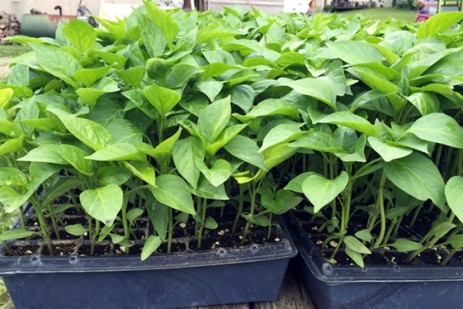Apr 11, 2018Giving tomato and pepper seeds the hot water treatment
We have fielded a number of questions this winter about using hot water treatments for tomato and pepper seeds.
This article summarizes these recent conversations, and includes updates on equipment selection and use.
Why hot water treat tomato and pepper seeds?
Bacterial diseases of tomato and pepper are difficult to manage, and can cause significant crop loss in Pennsylvania. Common bacterial infections of tomato include bacterial speck (Pseudomonas), bacterial spot (Xanthomonas) and bacterial canker (Clavibacter). Pepper is also susceptible to bacterial leaf spot (Xanthamonas). An integrated management plan for reducing losses due to bacterial diseases of tomato and pepper includes:
- field rotation
- clean seed
- greenhouse sanitation
- in-field practices to minimize disease incidence and severity
Heat treatment is an effective practice in assuring that seeds are not contaminated with these pathogens, or are “clean.” Growers can purchase seed that is already hot-water treated, or can treat the seed themselves by following a specific procedure. A less effective alternative is to treat seeds with chlorine, but this only kills pathogens on the surface of the seed coat, and doesn’t reach bacteria embedded within or under the seed coat. Chlorine treatment is not always reliable, especially for canker, which is known to become embedded within or under the seed coat.
Procedure for treating tomato and pepper seeds
Only treat seed you will use that year. Do not treat seed that has already been treated; this should be stated on the seed packaging. Do not treat seed that is pelletized or already fungicide treated. The 2018 Mid-Atlantic Commercial Vegetable Production Recommendations describes the recommended procedure:
“Seed heat treatment follows a strict time and temperature protocol and is best done with thermostatically controlled water baths. Two baths are required: one for pre-heating, and the second for the effective (pathogen killing) temperature. For pepper seed, the initial pre-heating is at 100°F (38°C) for 10 minutes, followed by the effective temperature of 125°F (52°C) for 30 minutes. For tomato seed, the initial pre-heating is at 100°F (38°C) for 10 minutes, followed by the effective temperature of 122°F (50°C) for 25 minutes. Immediately after removal from the second bath, seeds should be rinsed with cool water to stop the heating process. After that, seeds should be dried on a screen or paper.”
Note that the procedure is the same except that pepper seed is held at a higher temperature and for a longer time period than tomatoes.
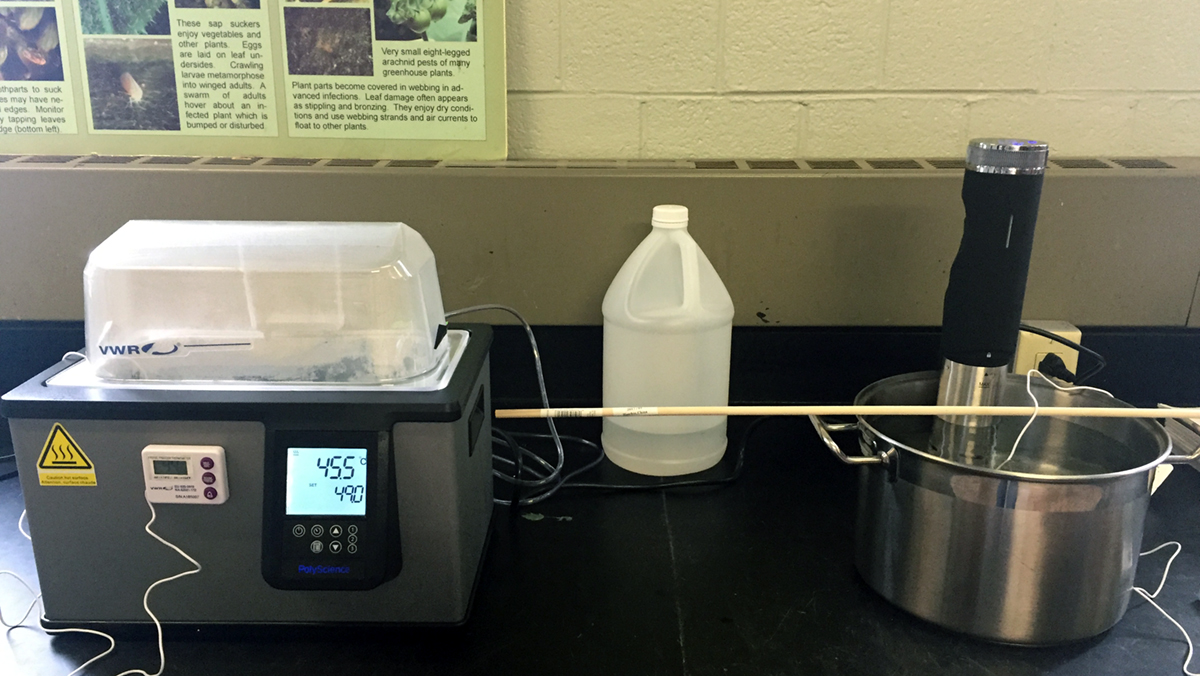

Equipment and supplies to treat your own seeds
Seeds must be placed into pouches before treatment. Cone-style coffee filters, clipped at the top, are frequently used. Others have used pouches made from window screening, or tea infusers. Make sure you tag the pouch! The seed should not go back into the original envelope once it is treated.
The set-up includes two water baths. The first water bath preheats the seed and the pouch(es) to a base temperature (100 to 110° F) and then the second water bath is used to actually treat the seed at a specific temperature. An alternative set-up for the first water bath is an immersion sous vide (see photo 2). This is a method of cooking food in a plastic pouch in water at a controlled temperature. It consists of a heater and a water circulator and clips to the side of a large pot.
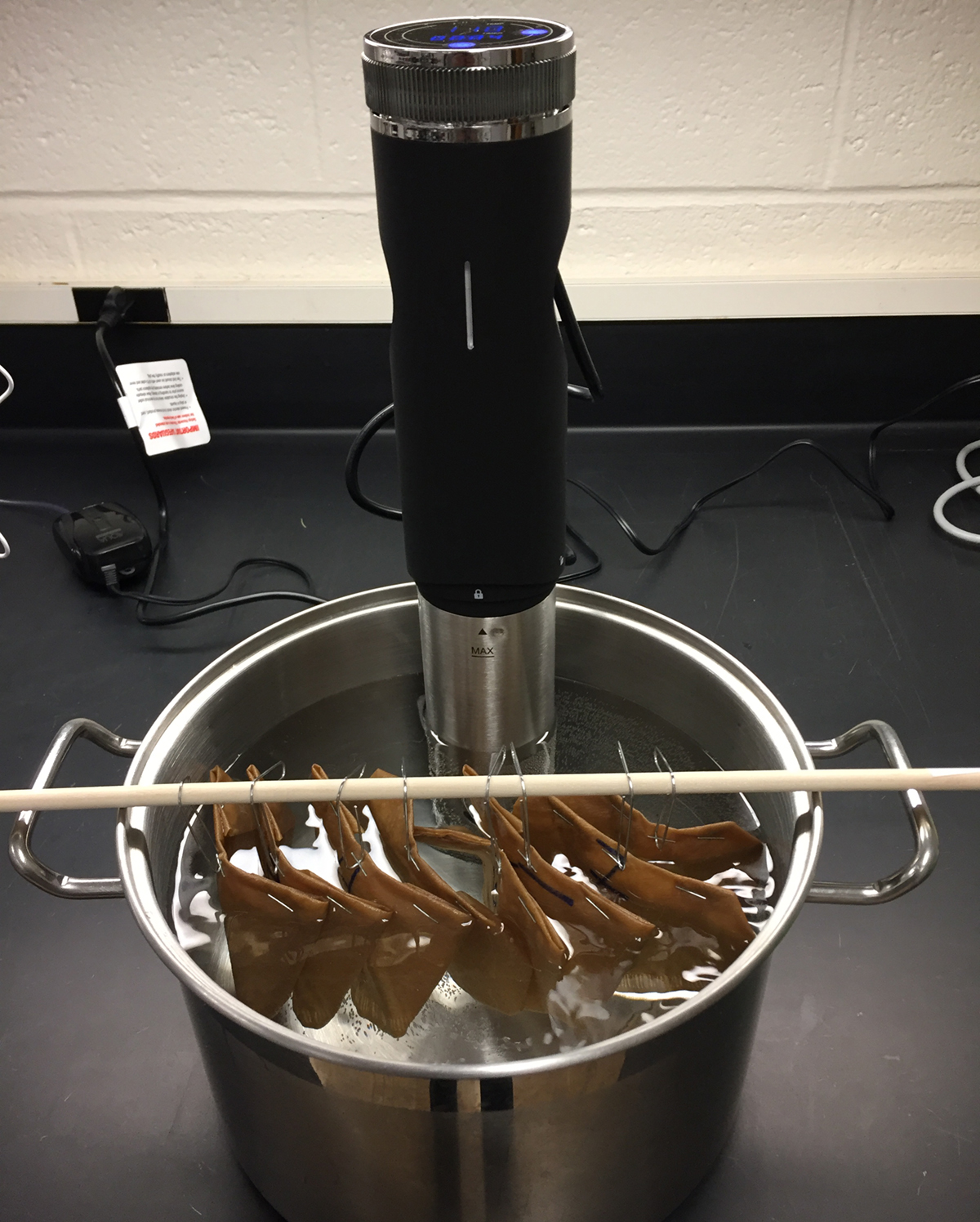

Supplies:
- Distilled water
- Aquarium bubbler
- Roll of fiberglass window screen
- Coffee filters
- Weights (such as metal nuts or coins)
- Plastic labeling stakes and permanent markers
Equipment:
- Two water baths or one water bath and one sous vide
- Thermometer
- Small aquarium pump with tubing and bubbling stone
Equipment model examples:
- Sous Vide Power Precision Cooker ($70)
- PolyScience 5 L General Purpose Water Bath (WB05A11B) ($460)
- VWR Digital Fridge/Freezer Thermometer ($50)these are a little easier to manage than a glass thermometer but a glass cooking or candy thermometer will do.
- Small aquarium pump, tubing and bubbling stone (total ~$11)are widely available at stores selling pet and aquarium supplies.
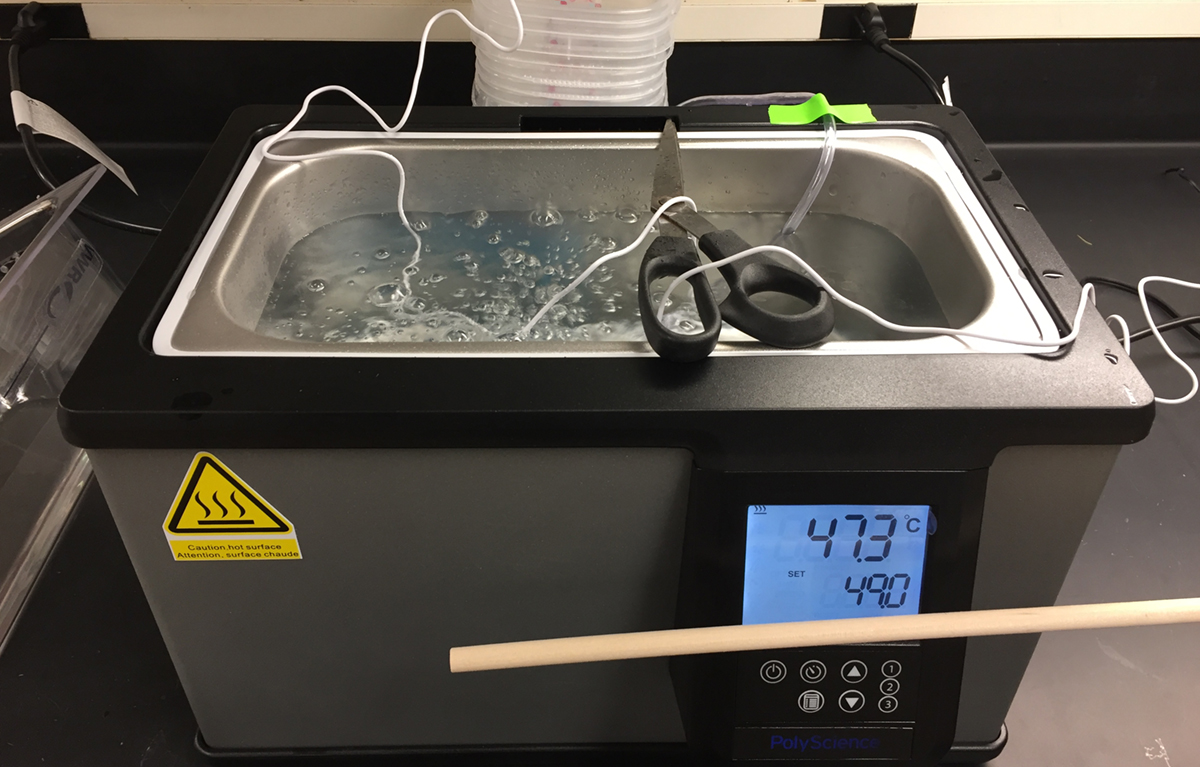

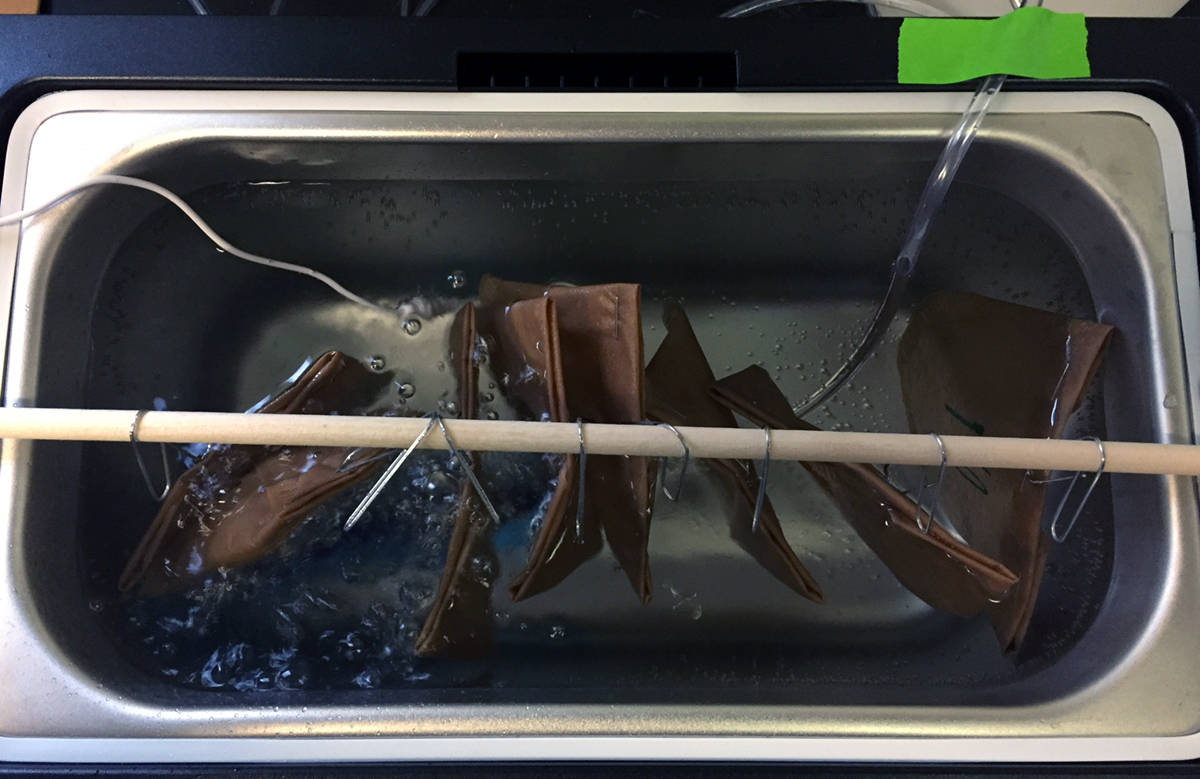

The temperature drops when I put the seed into the second bath. Is this a problem? The process is not so precise (i.e. it is robust enough) that a few tenths of a degree is going to affect the efficacy of the treatment process. So that means you should count the time that the seed is in the water bath even if it is a few tenths of a degree under the recommended temperature. You could also bump up the temperature in the first water bath to 110°F to help minimize the drop in temperature, or consider treating less seed at a time.
I treated some seed according to the recommendations and then they didn’t germinate. Did the treatment injure the seeds?New, vigorous seed should not be damaged by proper heat treatment. However, seed quality can greatly impact the effect of heat treatment on seed germination. Old and weak seed often won’t fair well after treatment. If you have reason to doubt the vigor of your seed, do a germination test before you subject it to a hot water treatment.
– Lee Stivers, Horticulture Extension Educator
– Beth K. Gugino, Ph.D., Vegetable Pathology Associate Professor
Top: Pepper plants. Photo: Lee Stivers, Penn State


